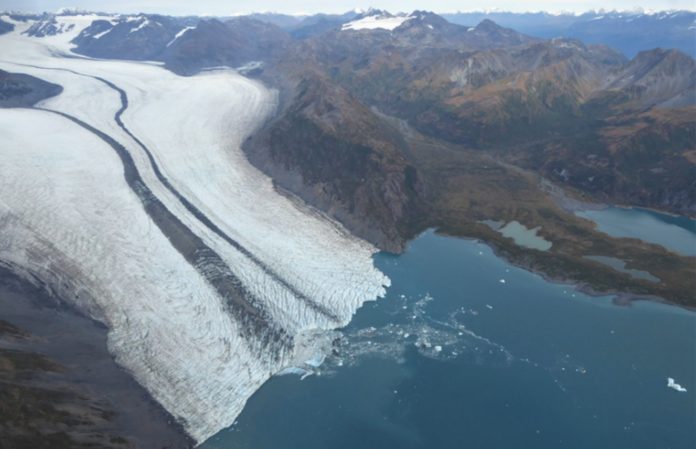The glaciers are disappearing from Alaska’s Kenai Fjords National Park
A new study conducted by the University of Washington and the National Park Service studies glaciers in Kenai Fjords National Park, a magnificent treasure located approximately two hours south of Anchorage.
The study, which came out today in The Journal of Glaciology, shows that 13 of the 19 glaciers are retreating significantly, four are generally steady, and two have advanced. Additionally, it identifies patterns in the fastest-disappearing glacier kinds. The almost 670,000-acre park is home to a number of different glaciers, some of which flow into the ocean, while others end their journey in lakes or on land.
According to lead author Taryn Black, a doctorate student at the University of Washington studying Earth and space sciences, “these glaciers are a big draw for tourism in the park — they’re one of the main things that people come to see.”
“Park managers had some information from satellite images, aerial photos, and repeat photography but they wanted a more complete understanding of changes over time,” says the report.
Lake-terminating glaciers, such the well-known Bear Glacier and Pedersen Glacier, are retreating at the fastest rate, according to the research. Between 1984 and 2021, Bear Glacier retreated by 5 km (3 miles), and Pedersen Glacier retreated by 3.2 km (2 miles) over that time.
Climate change, according to Black, is a major factor in the glacier retreat in Alaska. These glaciers are located at a very low altitude. In addition to raising temperatures, it may be leading them to experience more rain than snow during the winter, which is consistent with other climatic research in this area.
Unexpectedly, Holgate Glacier, a tidewater glacier that terminates at the ocean, has been moving forward lately. In 2020, local boat operators had mentioned seeing newly exposed land close to the glacier’s edge. However, the new analysis reveals that the glacier has been moving forward as a whole for nearly 5 years and seems to advance and retreat in predictable cycles. Most of the other tidewater glaciers’ edges remained largely constant throughout the study period.
The six glaciers that terminated on land all displayed a mixed response, with most retreating, especially during the summer, albeit at a slower rate than the glaciers that terminated on lakes. The land-terminating Paguna Glacier, which is buried with rock debris from a landslide brought on by the 1964 Alaska earthquake, was the only other glacier to advance throughout the research period. The glacier’s surface is protected from melting by this material.
Black traced the contours of each of the 19 glaciers—a total of around 600 outlines—using 38 years’ worth of satellite photos taken in the fall and spring. To locate where the glacier’s margin was, she visually examined each photograph. Black recently calculated the rate of retreat of marine-terminating glaciers in west Greenland using a similar methodology.
The updated statistics for Alaska serve as a foundation for research on how these glaciers may be affected going forward by climate change, which includes increased air temperatures as well as changes to both the kind and amount of precipitation. Due to their exposure to the humid, warm maritime climate, all of the glaciers in the research are classified as maritime glaciers.
The findings of this study can be put to immediate use by park managers. These data help quantify the changes that have occurred and will continue to occur for glaciers and their surrounding habitats.
“We can’t manage our lands well if we don’t understand the habitats and processes occurring on them,” adds co-author Deborah Kurtz.
“Interpretation and education are also an important part of the National Park Service mission. These data will allow us to provide scientists and visitors with more details of the changes occurring at each specific glacier, helping everyone to better understand and appreciate the rate of landscape change we are experiencing in this region,” adds Kurtz.
Image Credit: U.S. National Park Service/Deborah Kurtz
You were reading: New analysis shows National Treasures Melting Away
